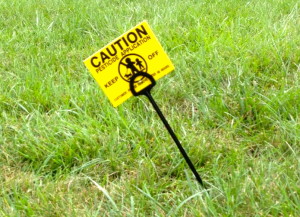I’ve just returned to work after being away from the office for several months. It was time off from work so that I could spend time on with our recently expanded family. We had the great fortune of welcoming our newborn son into the world at the end of May. This summer I spent quite a few (very) early mornings, dark circles under my eyes with a large mug of coffee in hand, at local parks toting our infant and chasing around our two and half year old daughter. One of our favorite spots has not just slides, but a great little beach on the Choptank River where my toddler can collect rocks and shells and check out the jellyfish while I bop around with our infant in a carrier hoping he’ll nap. Inevitably, I run into lots of other moms, parents, and caregivers there. When people find out I live locally (this park is frequented by beach travelers), the question I hear most often is “you think it’s OK for my children to swim down there at the little beach?” As in, “will my kids get sick if I let them swim in the river?”
It’s very hard to resist the urge to get on my clean water soapbox. Instead, I just try to be practical and helpful. But I found myself fumbling around for a good answer. Is it too polluted to swim? Shouldn’t the answer be a simple yes or no? And shouldn’t I be able to point to a reliable source that gives me the information I need to decide if my kids can go in the river? Scientists agree across the board that the Choptank is dirty. In fact, it is probably one of the dirtiest rivers that flows into the Chesapeake. If someone is testing locally for bacteria counts, the information doesn’t seem to be posted anywhere for public consumption. How are people supposed to know what the deal is? If there is public information about whether the water is safe for swimming in the Choptank, I couldn’t find it. A recent article in the Bay Journal recommends doing a little internet research before plunging in, but for the Choptank, the internet came up empty. Maryland Department of Environment does have a beach advisory website, but lists no sites on the Choptank. What I learned is that we don’t have good public information about whether it is safe to swim in the river in my community.
A notable solution to this problem is the Waterkeeper Swim Guide which is online and has a handy app for your smart phone. Quite a few swimming spots around the Bay are in the system, although precious few on the Eastern Shore, and none on the Choptank. The app pulls up a map and you can look up beaches near your location. The information is super easy for a ding-dong like me to understand and use. If the water is safe, the status is “green.” You can guess the rest. Sites in Anne Arundel County include information from County Health Department and a warning not to get in the water within 48 hours of a rainstorm. Our friends at West/Rhode Riverkeeper, South River Federation, and Assateague Coastkeeper do a particularly good job of keeping their constituency informed about water safety.
So, who, other than clean water geeks and freaked out moms like me, cares about whether the river is safe for swimming? It seems to me that there are probably lots of parents concerned about whether the water is safe. The communications experts and pollsters tell us consistently that health is a top concern for Marylanders. But the parents I know are like us –pretty slammed trying to get the basics done, such as raising the kids and staying employed. Personal activism on issues we care about, while it is something our family values, ends up pretty low on the list of priorities. I am fairly certain we are not alone.
On the Eastern Shore, most of the information sharing and connecting about what’s happening in the community happens on social media. A virtual network that busy families could easily plug into to have their voices heard on issues they care about could be powerful. National outfits like Mom’s Rising do an amazing job of amplifying the voices of women and mothers through their massive virtual network. They’ve been effective at raising awareness and mobilizing grassroots support for issues such as increasing access to healthy food in schools, improving early childhood education, and better family and sick leave policies. Social media makes it easy for busy people to sign petitions, send letters to their elected officials, and share information broadly with friends and family. I wonder what the potential is here in Maryland for a virtual network of progressive people who care about issues that heavily impact families –like paid sick and maternity leave, access to healthy food, and perhaps rivers that are safe for our children to frolic in all summer long.
